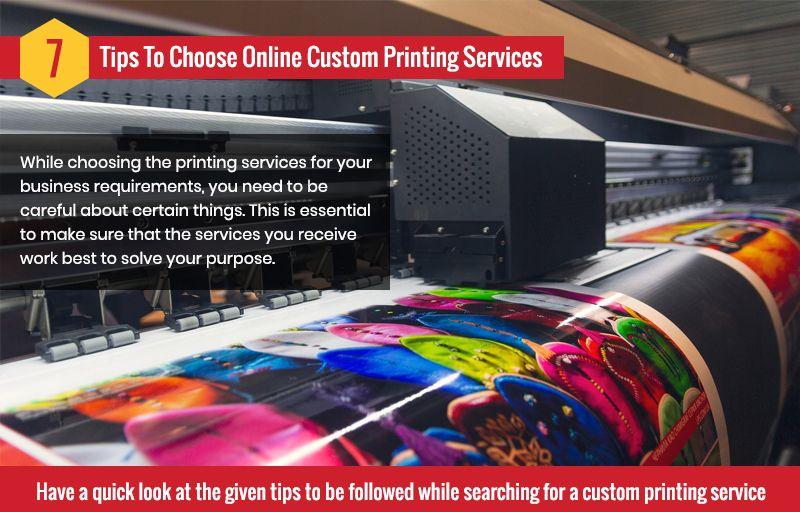Learn how to scale your side hustle using a print on demand approach.
The Future of Marketing Materials: Developments in Digital Printing
As the advertising and marketing landscape continuously advances, electronic printing is becoming a transformative pressure, poised to redefine standard techniques. The change from common to customized products, driven by technological innovations, promises to transform brand-consumer connections. This shift is not without its intricacies and obstacles. It beckons an expedition into the cost-effectiveness, sustainability, and total performance of digital printing in contemporary marketing methods.
The Change From Standard to Digital Printing in Marketing
As the world swiftly transitioned right into the electronic age, the landscape of advertising and marketing experienced a substantial shift from typical to electronic printing. This shift was driven by a myriad of factors, including the need for more individualized, targeted marketing materials, as well as the need for speed and efficiency in manufacturing. Standard printing techniques, with their prolonged turn-around times and minimal personalization alternatives, were no much longer appropriate in the hectic globe of electronic advertising. Digital printing became a superior alternative, using extraordinary degrees of flexibility, speed, and personalization. Its ability to create high-quality prints in brief durations, coupled with its capability for on-demand printing, transformed the marketing market, rendering typical techniques outdated.
The Technological Improvements Driving Digital Printing Advancement
While the benefits of electronic printing have actually stimulated its quick adoption, it is the continuous technical innovations that are truly driving advancement in this field. These technical developments are not just enhancing the capabilities of digital printing however also improving the method companies approach their marketing techniques.
The Influence of Digital Printing on Marketing Techniques
The advent of digital printing has considerably transformed conventional advertising and marketing techniques. This technology not just enhances brand exposure in the electronic realm but likewise provides affordable services for companies. The subsequent sections will even more explore how electronic printing is transforming the advertising and marketing landscape.
Revolutionizing Conventional Advertising And Marketing Approaches
Digital printing has actually stormed onto the advertising scene, drastically shifting the trajectory of typical methods. It has actually paved the method for very individualized, targeted projects. Unlike standard printing, which calls for bulk orders to be economical, electronic printing permits affordable short runs and rapid turn-arounds. This flexibility, coupled with the capacity to change designs in real-time, makes it possible for organizations to react swiftly to market adjustments. Additionally, digital printing's high-quality production boosts the visual charm of advertising and marketing materials, developing a stronger impression on customers. The combination of QR codes and enhanced truth via digital printing likewise gives an interactive experience, merging the physical and electronic realms. Therefore, digital printing is revolutionizing typical marketing approaches, driving a lot more vibrant, receptive techniques.

Enhancing Brand Presence Electronically
As marketing strategies quickly develop, electronic printing has arised as a powerful device for boosting brand exposure. Digital printing allows for personalization, allowing brands to customize their advertising and marketing materials to specific consumer sections. Electronic printing is not just a technical development, however a calculated method for services intending to optimize their brand name's exposure in the digital age.
Cost-Efficiency of Digital Printing
Beyond improving brand exposure, electronic printing also considerably impacts marketing methods with its cost-efficiency. Unlike typical printing techniques that entail many actions and products, digital printing requires much less configuration time and resources, resulting in a decrease in total costs. Moreover, it permits on-demand printing, thus eliminating the demand for mass orders, storage space, and waste from unsold products. It gives the flexibility to customize prints to certain target market, minimizing expenses related to wasted marketing. Additionally, the premium result of electronic printing enhances the appeal of advertising products, possibly raising consumer conversion rates and sales. Hence, the cost-efficiency of digital printing can considerably simplify advertising strategies, adding to an extra reliable and lucrative advertising project.
Cost-Effectiveness and Efficiency of Digital Printing
The developments in electronic printing have not just transformed the industry but additionally brought about considerable cost-effectiveness and effectiveness. print on demand. Reduced costs of production, simplifying organization procedures, and sustainability are crucial elements of this makeover. An expedition of these elements will certainly supply a comprehensive understanding of the economic and operational great post to read advantages digital printing offers

Reduced Prices of Manufacturing
Considerable innovations in electronic printing technology have notably decreased production expenses, paving the method for a much more economical and reliable procedure. Digital printing permits the manufacturing of tiny to tool print runs financially, removing the demand for huge first print quantities. Electronic printing uses the advantage of on-demand printing, which decreases stock costs.
Streamlining Company Operations

Sustainability in Digital Printing
Integrating sustainability right into service methods has actually ended up being increasingly vital, and electronic printing is no exception. With its cost-effectiveness and effectiveness, digital printing supplies a more lasting option compared to traditional techniques. It uses less power, decreases waste, and minimizes the carbon footprint of printing procedures. It likewise lowers the requirement for supply and storage, as printing can be done on-demand, therefore reducing source usage. Digital printing enables for the usage of biodegradable inks and recycled products, adding to a circular economic climate. It's not only a matter of eco-friendly duty but likewise a calculated action that can lead to significant useful site cost savings and effectiveness renovations. In the future, the significance of sustainability in digital printing is expected to grow even additionally.
Situation Researches: Successful Execution of Digital Printing in Marketing
Ever before questioned just how digital printing has considerably transformed the landscape of advertising and marketing? An archetype is Coca-Cola's 'Share a Coke' campaign. To customize their product, Coca-Cola carried out electronic printing to change the typical logo design with one of the most prominent first names. This innovative marketing approach caused a considerable sales boost. Another instance is IKEA's use digital printing to produce its renowned directories. print on demand. By employing variable information printing, IKEA was able to customize catalogs based upon customer choices, enhancing customer involvement and retention. Amazon's print-on-demand service is a testimony to the success of digital printing. It allows authors to print publications as view publisher site required, reducing waste and prices. Undoubtedly, these study demonstrate the transformative power of electronic printing in advertising.
The Potential customers and Obstacles of Digital Printing in Future Marketing
Mirroring on these situations, it comes to be clear that the possibility of electronic printing in advertising and marketing is enormous. While electronic printing provides exciting prospects for the future of advertising and marketing, these obstacles need to be addressed. Stabilizing innovation with ethical considerations will certainly specify the course onward for electronic printing in the advertising and marketing landscape.
Conclusion
To conclude, electronic printing is reinventing the marketing landscape with its personalized and economical remedies. Technological advancements are fuelishing this shift, enabling brands to attach on a much deeper level with consumers. Regardless of possible difficulties, the prospects of electronic printing are appealing, using environment-friendly practices and improved customer interaction. As this advancement unravels, it appears that electronic printing is positioned to redefine the future of advertising products.